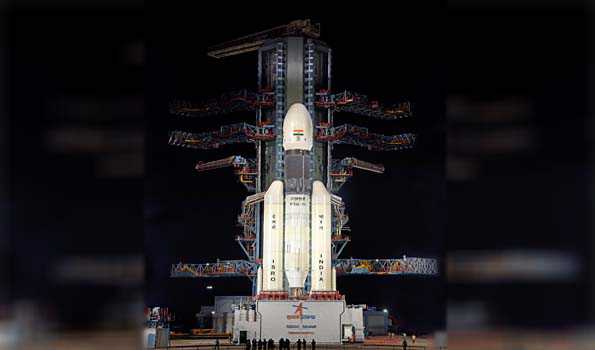The aborted Chandrayaan-2 mission was likely to take off next week as the scientists of the Indian Space Research Organisation (ISRO) has rectified the technical glitch in the GSLV-Mk-III launch vehicle.
ISRO sources the glitch has been rectified and the launch might take place between July 20 and 23. The ISRO has been looking a couple of dates for the launch. ‘It can be between July 20 and 23’, the sources added.
The launch earlier scheduled at 0251 hrs on July 15 from the Second Launch Pad was called off an hour before the lift off following a technical snag.
After the 20-hour countdown was stopped at T-minus 56.24 seconds, ISRO, in a statement said ‘a technical snag was observed in the launch vehicle system at one hour before the launch. As a measure of abundant precaution Chandrayaan-2 launch has been called off for today. Revised launch date will be announced later’.
The second lunar mission, the 3,850 kg Chandryaaan-2 is the ambitious and dream project of ISRO and would be launched by India’s heaviest rocket GSLV-Mk-III, for a soft landing on the Moon South Pole.
The launch would take place from the Second Launch Pad at the Satish Dhawan Space Centre from the spaceport of Sriharikota.
Chandrayaan-2 would be carrying an Orbiter, Lander (Vikram) and Rover (Pragyan), would be injected into an earth parking 170.06 x 40,400 km orbit, from where it would commence its 54-day long, 3.844 lakh km voyage for a soft landing on the Moon south pole on September six.
India’s first Lunar Mission Chandrayaan-1 was launched using a PSLV on October 22, 2018 and it detected presence of water on the Lunar surface. While the technical difficulties of landing on the Moon’s South Polar region have deterred many previous attempts, Chandrayaan-2 will be the first to reach this part of the lunar surface–taking the Indian tricolour where no human has been before.
Carrying 13 Indian Payloads (eight on Orbiter, 3 on Lander and two on Rover) and one passive experiment from NASA, Chandrayaan-2 is on a mission unlike any before. Leveraging nearly a decade of scientific research and engineering development, the second lunar expedition will shed light on a completely unexplored section of the Moon–its South Polar region, a site not explored by any country yet. Only Russia, the United States and China have soft-landed on the moon.



